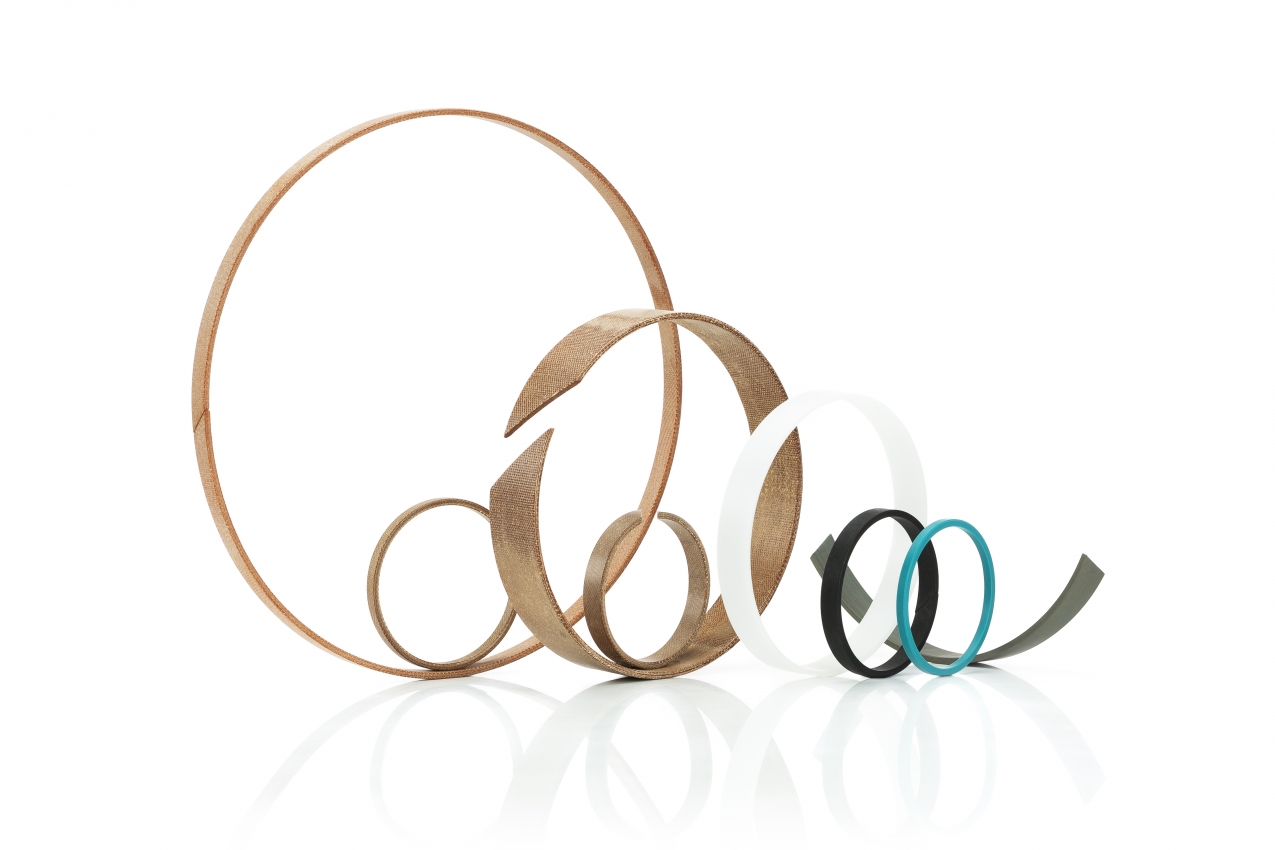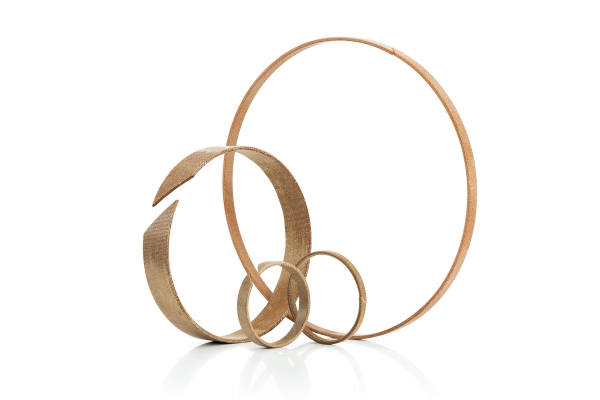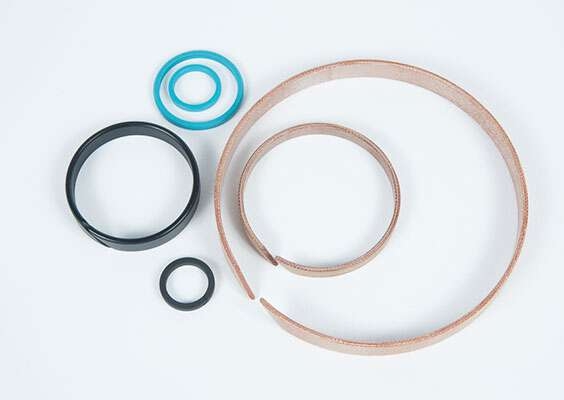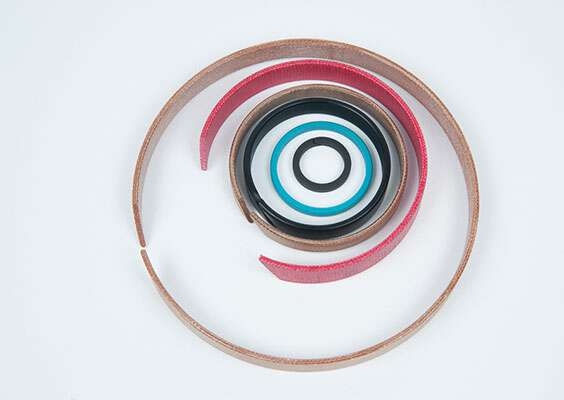-
Homepage
-
Seals and Gaskets
-
Standard Profiles
- Guide rings
What are guide rings? Application in hydraulic seals
Guide rings and guide bands are used in hydraulic cylinders to hold the piston rod centrally in the cylinder. They prevent metallic contact between piston and cylinder and between piston rod and cylinder head during sliding.
This would lead to scoring and abrasion on the metal surfaces and eventually to the defect. In addition, the hydraulic rod seal could be crushed and damaged in such a case. This danger exists above all in the event of transverse forces acting on the hydraulic system.
Guide rings absorb such transverse forces and thus protect the other components of the hydraulic seal from premature failure.
What types of guide rings are there?
We offer guide rings and guide bands in a variety of profiles, tailored to specific applications, such as the standard rectangular guide ring with rounded corners. Our range also includes guide rings with angle profiles or with retaining lugs, available for both internal and external applications. Additionally, we stock guide rings designed as groove rings with either an internal groove or an outer groove.
Our guide rings and bands are provided in a slotted configuration to facilitate easy installation. Hydraulic cylinders with rod seals, for instance, are utilized in workshop presses - with manufacturers like OMCN being examples.
We are eager to provide you with our technical expertise to ensure you select the optimal guide rings for your application. You are, of course, also welcome to request custom-made guide rings for your specific sealing needs. In addition, we offer a variety of hydraulic seals and pneumatic seals!
Guide Ring Materials
Common materials and sealing materials for guide rings are glass-fibre-reinforced polyamide and phenolic resin with a fabric insert. Due to their good mechanical resistance and high wear resistance, they are ideally suited for medium to highly stressed areas of application.
PTFE (polytetrafluoroethylene) is used when the mechanical stress is rather low, but high wear resistance, chemical resistance and low friction are required.
If you need help choosing a profile and material combination, you can simply contact us. In particular, seals for industry are often exposed to high loads and therefore require suitable guide rings. We help you find the optimal solution for industrial seals.
How do I mount a guide ring?
Our guide rings and guide bands are particularly easy to mount thanks to the slotted design. Here we explain which work steps are necessary.
First, make sure the installation space is clean and free of burrs or sharp edges. These could destroy your guide ring. Ensure that all other sealing elements are properly installed.
Now pull the guide ring together at the slot edges so that it fits into the installation space. Place one end of the ring in the appropriate groove. Now you can place the rest of the guide ring in the groove. The guide ring will snap into the installation space.
All profiles listed below are available in all sizes and materials from 4 mm to 2,500 mm (0,157 in to 98,42 in).





